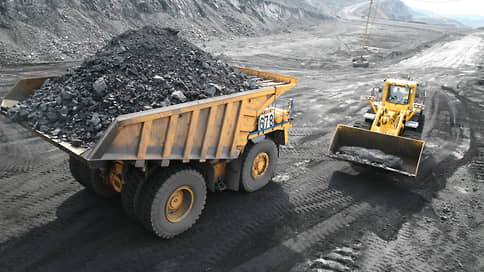Coal has been falling for two years – Newspaper Kommersant No. 180 (7381) of 09/29/2022
[ad_1]

The next two years, the coal industry will reduce production. By 2025, production will fall by 4.1%, to 421 million tons. The reason for the fall is the EU sanctions, the lack of throughput capacity of the Eastern polygon and the high costs of companies when exporting to Asia through Western ports. However, the Ministry of Finance will still raise the tax burden on the industry through the severance tax and export duties. According to experts, thermal coal production will be reduced first of all, but the actual size of the reduction will depend on demand in the main export markets and the flexibility of supply chains.
By 2025, coal production in Russia may fall by 4.1%, or up to 421 million tons, compared to 2021 levels. These ratings are included in forecast socio-economic development of Russia, which was prepared by the Ministry of Economy.
Since August 10, 2022, Russian coal supplies to Europe have completely stopped, while reorientation to Asian markets is difficult due to the lack of throughput capacity of the Eastern landfill and excessively long sea transportation routes to Asia from the ports of the North-West and South-West. European attempts, writes the Ministry of Economy, to replace Russian imports have already led to a multiple increase in coal and gas prices, as well as growing competition between European and Asian importers for available resources.
The prospects for the development of the coal industry are related to its ability to reorient export flows from the European direction to alternative markets, as well as the level of coal consumption for various purposes in the domestic market.
“In addition to sanctions pressure, the environmental agenda and plans to phase out the use of coal in power generation will remain a serious challenge not only in Western countries, but also in developed Asian countries,” the forecast says.
The previous forecast assumed an increase in production by 11.8% by 2024 compared to the level of 2020, or up to 445 million tons. However, now the industry will show a fall in 2022 – by 4.2%, and in 2023 – by 9.5%. The situation will begin to change in 2024 and 2025, when production will begin to grow by 5.5% and 4.8% yoy, respectively.
Despite the negative forecasts, the Ministry of Finance will raise the tax burden on the industry. In 2023–2025, additional budget revenues from the export duty on coal and fertilizers, as well as a temporary increase in the MET rate on coal, will amount to RUB 135.6 billion.
The head of the Ministry of Finance, Anton Siluanov, said that the increase in taxes is aimed only at withdrawing excess profits. “We took the average price, looked at their recent returns, which are planned for the next year. And in this way, only super-incomes were centralized, without in any way being introduced into the basic level of tax exemptions, ”he said on September 28 (quoted from “RIA News”).
First of all, the production of thermal coal will be reduced, says Boris Krasnozhenov from Alfa-Bank. According to statistics from Metal Expert, deliveries of thermal coal to the domestic market increased by 6% in the first seven months of 2022. At the same time, the expert emphasizes, there was a decrease in thermal coal exports by approximately 10% over the same period. Exports declined towards Europe (Poland) and to a number of Asian countries (Japan and Taiwan). Thermal coal production in Russia decreased by 3% in the first seven months compared to last year. “In the coking coal segment, production increased by 5% over the same period, while there is an increase in exports by more than 30%, while domestic consumption fell by 11% due to a decrease in steel production,” the analyst notes. In his opinion, the real decline in production will depend on demand in the main export markets and the flexibility of supply chains.
[ad_2]
Source link





